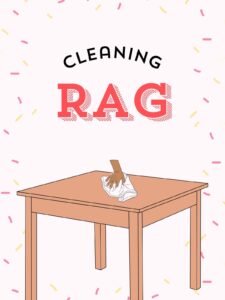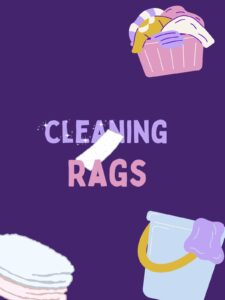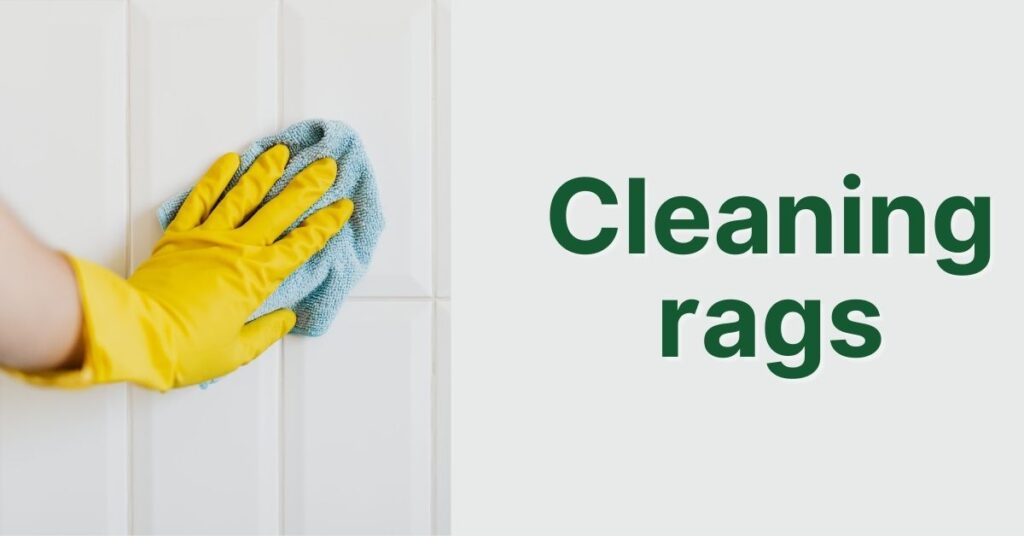Cleaning rags
Cleaning rags contain fibers small enough to help pick up and trap dust, dirt, and bacteria from glass, wood, countertop surfaces, and many more. When we talk about cleaning, probably the least heralded tool is the rag. Whether at home or in a professional cleaning business, the secret is choosing the right rag for the work to be done. This guide talks about some of the rags types and their uses, and how to maintain them at best to give optimum performance.
Best Cleaning rags
Microfiber cloths are considered the best cleaning rags because of their high absorbency and effectiveness in cleanliness. The rags contain fibers small enough to help pick up bacteria from glass, wood, countertop surfaces, furniture, and many more. They are durable and can be washed several times without any loss of effectiveness making them not only eco friendly but also cost effective. Another excellent choice for more challenging messes would be cotton rags. They give high results which goes a long way in dealing with more abrasive cleaning jobs.
Types of Cleaning rags
There are two great types of Cleaning rags;
Cotton Rags
Made out of natural fibers, cotton rags are soft, very highly absorbent, and usable for general cleaning tasks in such forms as old T-shirts, towels, or specialized cleaning cloths. They are biodegradable, soft on surfaces, and easily laundered. Linting may be less sturdy compared to synthetic. A synthetic product made by bonding polyester and polyamide, microfiber rags are designed to attract and absorb dirt, dust, and moisture more effectively compared to traditional fabric. Best for all types of general-purpose cleaning such as glass cleaning and buffing.

Synthetic Rags
Made from synthetic materials of various origins, these rags can be ‘purpose made’ and often come with features such as resistance to chemicals or extra strength. Many times used in industrial setups, these are fit for tasks that may sometimes be done using hair-colored chemicals in heavy-duty cleaning work. Durable, they are chemically resistant, and, in most instances, are designed for heavy-duty use. Can prove not to be eco-friendly and maybe they are not as soft as cotton or effective as microfiber.
How to Choose the Right Rag
Selection should be made based on the application, i.e., the proper rag for a specific job. While they may be suitable for general household cleaning and are relatively cheap, cotton rags will not serve ideally for cleaning electronic appliances or for polishing surfaces. Microfiber rags are much better suited for these purposes. Synthetic rags can be used in industrial applications or where there is the use of harsh chemicals.
Care for Your Cleaning Rags
Proper care keeps your rags in good working condition for longer. Some tips are given below.
Washing
- Cotton Rags: For the most part, warm water with some regular detergent is enough. Washing with fabric softeners will compromise the absorbency. Machine dry if you choose, but rags will last longer if they are air-dried.
- Microfiber Rags: Wash separately from anything that might leave lint on them. Use a mild detergent with no added bleach or fabric softeners. Air or tumble dry on low heat.
- Synthetic Rags: Adhere to manufacturer instructions for washing. Usually, they can be washed in a washing machine with nonabrasive detergent.
Storage
Rags must be stored in a clean, dry place. They must not be kept in wet places since they will aid in the growth of mildew and malodors.
Replacement
Regularly inspect rags for wear and tear. Replace when rags are too worn. Damaged rags are ineffective, and torn fibers can spread more dirt than gathered.
Advantages
Cleaning rags have a number of very positive attributes which make them indispensable to maintaining cleanliness. Their high absorbency and ability to lift grime off the surface make them suitable for a myriad of different tasks, anything from polishing glass surfaces to wiping countertops. Quality cotton rags are also absorbent and strong enough to handle heavy cleaning jobs and scrubbing without falling apart. These two types of rags are reusable and washable.
Using them is, at best, inexpensive in the long run and generates less waste when compared to a disposable cleaning product. The versatility that characterizes cleaning rags makes it apt to be used in homes and commercial spaces and proves practical for miscellaneous cleaning works

Negative
While cleaning rags have major roles to play in keeping the environment clean, they are not totally faultless. Though microfiber cloths do an excellent job, sometimes they tend to get prone to snagging or fraying if not handled or washed properly.
They build up oils and residues with time, and hence they need constant washing to stay in good working conditions. Although highly absorbent, cotton rags wear out with repeated use and produce they may also leave residues.
In case such rags are not properly cleaned and dried, then both types of rags will be able to support bacterial growth, contributing to cross-contamination through their improper use. At last but not least, some may be concerned about the higher initial cost coming with high quality microfiber rags against some cheaper alternatives. Proper care and maintenance ensure a rag will live long and serve well.
Why it is easy to use?
If you are concerned about sustainability, there is always the option of trying your hand at rags from recycled materials or using replaceable, reusable cloth in place of disposable rags. The biodegradable rags are mostly made of cotton; the synthetic microfiber rags may go a long way before needing to be replaced. Microfiber cloths, instance, trapping dust, dirt, and bacteria, reducing the need for chemical cleaners and contributing to a more eco-friendly cleaning routine. Among the equipment needed during cleaning, either in the residential or professional area, are the cleaning rags.
Learn about the different kinds available and ways to maintain them for the best performance and their best life span. Wiping down surfaces, dusting, cleaning up spills, polishing, and removing grime. If you’ve been around the natural, clean, or synthetic rags in the markets, invest in the kind that’s perfectly suited to your needs and learn how to maintain it.
